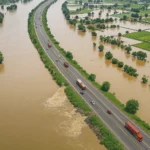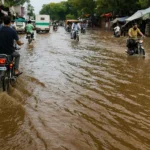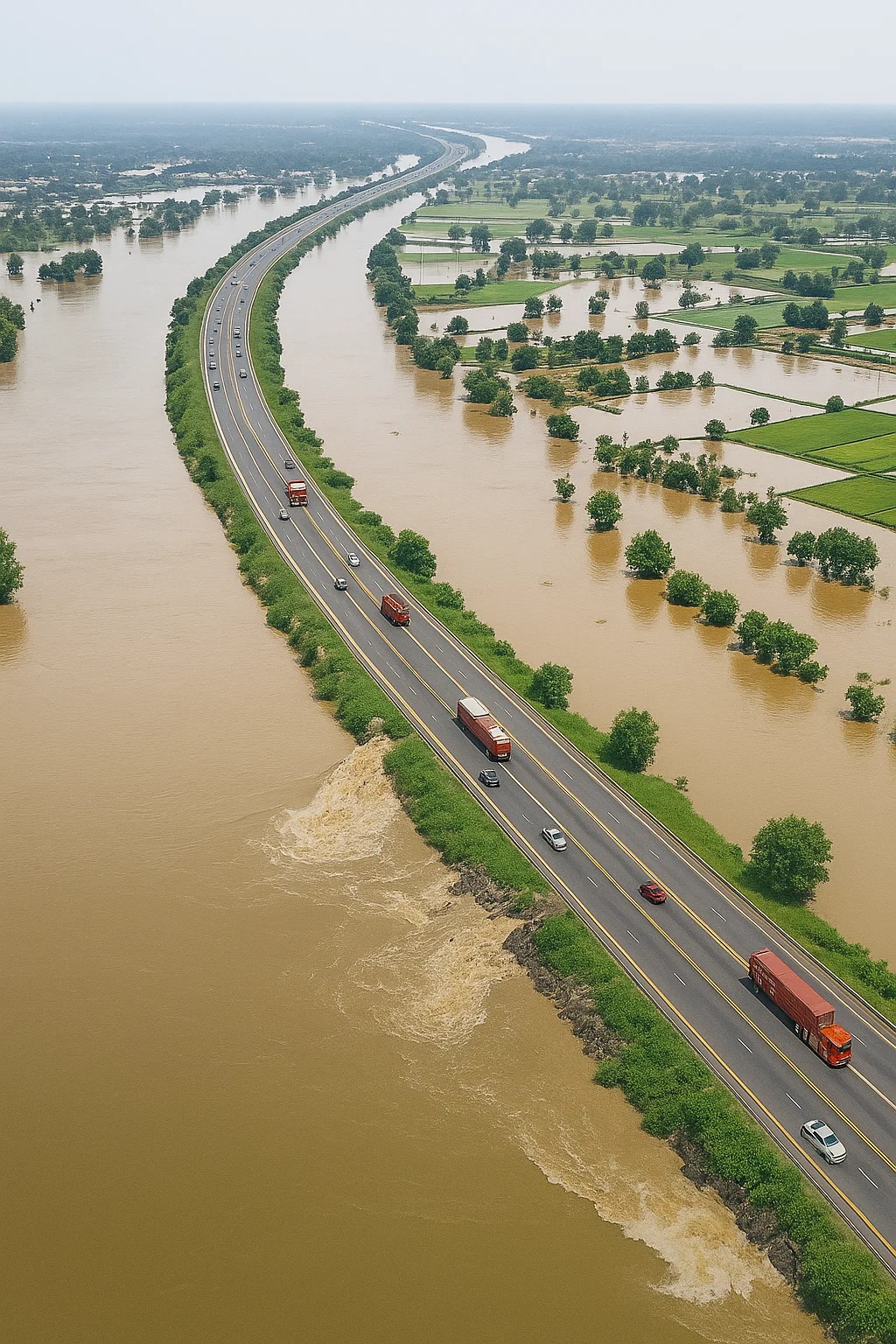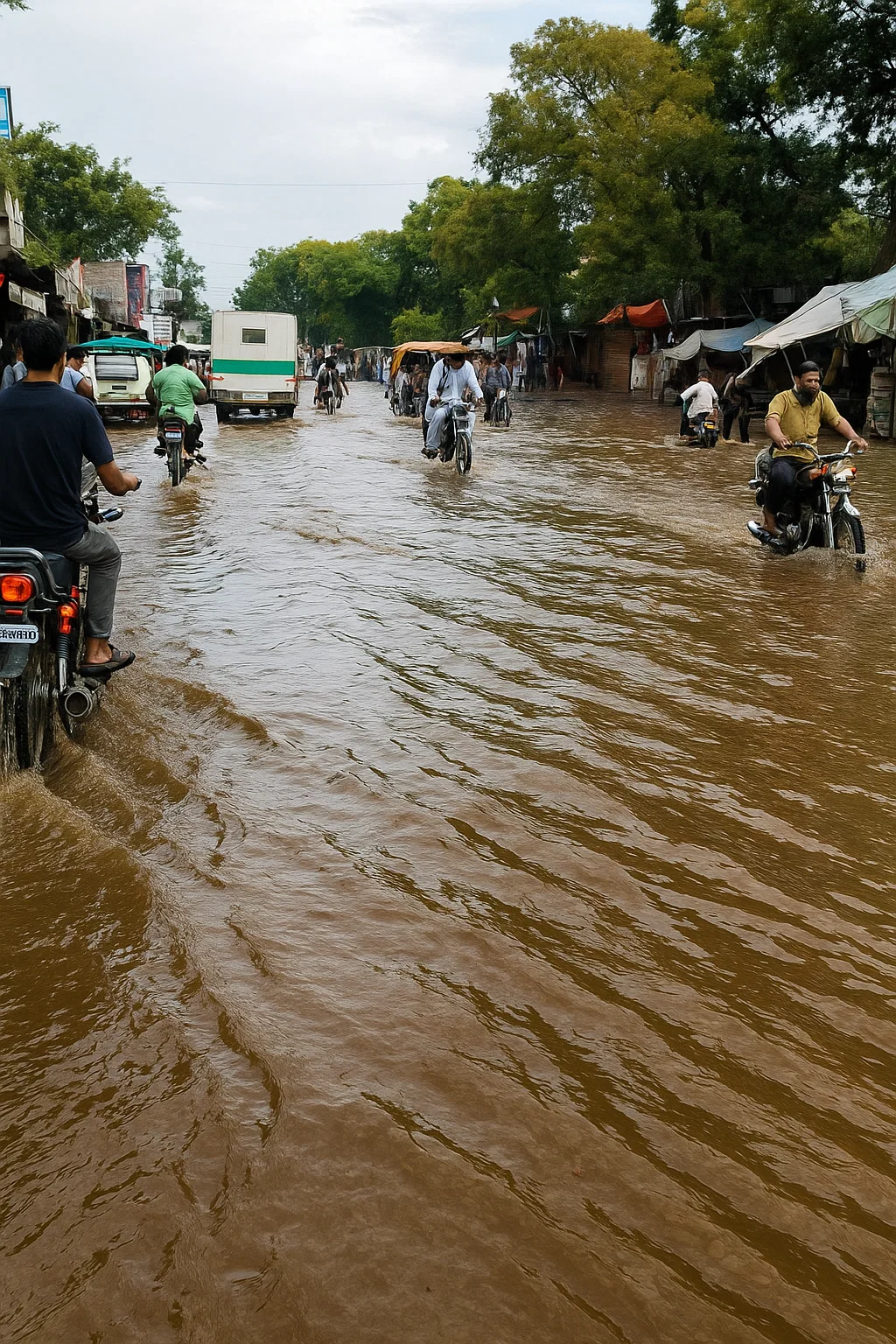The Sutlej River has once again entered the spotlight as rising water levels pose a serious threat to communities living along its banks. Authorities have issued multiple warnings and placed all departments on alert as inflows and outflows at key barrages continue to fluctuate. The situation underscores Pakistan’s growing vulnerability to unpredictable flood spells, with the Sutlej River becoming a focal point of concern for local administrations and relief agencies.
Rising Inflows at Key Barrages
At Head Ganda Singh, the inflow and outflow of the Sutlej River were recorded at 118,652 cusecs, reflecting an alarming rise that could worsen if heavy rains continue upstream. Similarly, Head Sulemanki reported 89,267 cusecs inflow with 82,008 cusecs outflow, placing surrounding areas under serious watch.
Moving further downstream, Head Islam recorded an inflow of 42,195 cusecs and an outflow of 40,295 cusecs, while at Head Syphon, both inflow and outflow stood at 36,682 cusecs. Officials noted that these figures, while fluctuating, point to the overall instability of the Sutlej River system during this monsoon spell.
Section 144 Imposed Along Sutlej River
In light of the flood threat, Section 144 has been imposed along the Sutlej River at Head Syphon, banning swimming, recreational visits, and boating. Authorities emphasized that such measures are vital to prevent accidents and safeguard lives. The Assistant Commissioner confirmed that restrictions will be strictly enforced, ensuring that no unnecessary gatherings occur along the dangerous riverbanks.
The local administration stressed that enforcement is not merely precautionary but a matter of public safety. The Sutlej River, known for its unpredictable surges, can become life-threatening within minutes, making vigilance essential.
READ MORE:
https://freedompakistan.com.pk/karachi-rain-triggers/
Relief Efforts and Camps
Rescue 1122 and the Livestock Department have already set up relief camps near vulnerable areas along the Sutlej River. These camps are providing temporary shelter, cooked meals, and essential supplies to displaced families. The administration has ensured that livestock, which often represents the primary livelihood of villagers, is also being relocated to safer ground.
Officials highlighted that coordination among agencies is improving, with dedicated flood posts monitoring the situation around the clock. The focus remains on minimizing casualties and ensuring quick response in case of embankment breaches.
Chenab River and Sutlej River Connection
While the Chenab River also rose dangerously in Alipur, Muzaffargarh district, breaching protective embankments, experts pointed out the interconnected risk with the Sutlej River. At Head Panjnad, inflows reached 70,000 cusecs, leading to widespread flooding in Basti Manghar Khan.
Floodwaters submerged settlements, destroyed crops, and left families stranded. This situation demonstrated how the rising Chenab can worsen the crisis for Sutlej River communities downstream, adding pressure to already weakened protective structures.
Taunsa and Dera Ghazi Khan Under Stress
In Taunsa Sharif, families continue to endure shortages of food and fodder. Many villagers are living under the open sky, reporting severe hunger among both people and livestock. The Sutlej River’s swelling waters indirectly add to their woes by hampering transportation routes and cutting off supply chains.
In Dera Ghazi Khan, floodwaters entered villages, forcing evacuations. Rescue 1122 reported relocating over 200 families and 560 livestock to safety. Officials reassured that emergency posts have been established, but warned that the Sutlej River, coupled with the Indus, could create compounded risks if more rains arrive.
Visit by Officials and Government Response
Deputy Commissioner Muhammad Usman Khalid personally visited low-lying areas, reviewed operations at flood posts in Bet Ashraf and Banbhan, and assured citizens that the administration remains on full alert. He added that the provincial leadership, under directives from Chief Minister Maryam Nawaz Sharif, is treating the Sutlej River floods as a top priority.
The Indus River flow has dropped from 500,000 to 250,000 cusecs, but experts warned of a possible rise with the eighth flood spell. When combined with the Sutlej River surge, the scale of flooding could overwhelm current relief efforts.
Relief Camps and Local Struggles
While relief camps are distributing cooked meals and water, many communities complain that government aid is insufficient. Families living near the Sutlej River argue that food, shelter, and fodder for livestock remain scarce. Most houses in some districts were spared due to being built on raised ground, but the plight of the landless poor continues.
In Vehari, flood-affected residents voiced their anguish. Advocate Muzaffar Baloch warned that stranded communities face shortages of essentials. He criticized the district administration for “empty claims,” insisting that practical help on the ground remains limited despite the ongoing crisis.
Tragedy in Layyah
In a tragic turn, an 18-year-old drowned in the Munda Canal in Layyah while attempting to record a TikTok video. Police reported that Rahman Sadiq handed his phone to a friend before jumping into the canal but never resurfaced. Rescue 1122 divers launched a search operation to recover the body.
This tragedy highlighted the dangers of water bodies like the Sutlej River and adjoining canals, especially when people underestimate their force during flood season.
Experts Warn of Climate Change Impact
Environmental experts continue to stress that the Sutlej River floods are not isolated incidents but part of a larger pattern linked to climate change. Glacial melt, unpredictable rainfall, and poor urban planning are amplifying the severity of floods. With Pakistan hosting one of the world’s highest numbers of glaciers, rivers like the Sutlej will remain highly vulnerable.
Unless the government invests in long-term measures such as reforestation, better embankments, and stricter urban management, the cycle of devastation will continue. The Sutlej River, once seen as a lifeline, is increasingly viewed as a seasonal threat.
Conclusion: A Call for Collective Action
The current crisis along the Sutlej River serves as a stark reminder of Pakistan’s fragility in the face of natural disasters. While relief operations, government visits, and Section 144 orders highlight active engagement, the long-term solution lies in resilience-building.
For now, thousands remain displaced, agricultural fields are submerged, and families face food insecurity. The Sutlej River has once again tested the strength of communities and the resolve of institutions. How Pakistan responds today will shape not only the fate of those living along the Sutlej River but also the nation’s preparedness for future disasters.












